Role of Reef-Flat Plate on the Hydrogeology of an Atoll Island: Example of Rangiroa
Abstract
:1. Introduction
2. Case Study Description
3. Materials and Methods
3.1. Soil Water Budget
- At time step k, if precipitation P < potential evapotranspiration PET, the difference (PET − P) is taken from the water stock S of the soil, until it is empty if necessary:
- -
- Sk = max (0; Sk-1 + Pk − PETk)
- -
- AETk = min (PETk; Sk-1 + Pk)
- -
- Peffk = 0
- If P > PET, the difference P − PET first fills the water stock S of the soil. When S reaches Smax, the surplus generates effective rainfall Peff:
- -
- Sk = min (Smax; Sk-1 + Pk − PETk)
- -
- AETk = PETk
- -
- Peffk = max (0; Sk + Pk − PETk − Smax)
3.2. Freshwater Lense Modeling for Natural Recharge Estimate
3.3. Tides Modelling for Diffusivity Estimate
4. Results
4.1. Data Time Series
4.2. Pumping Tests Interpretation
4.3. Soil Water Budget
4.4. Natural Recharge Calculation
4.5. Tidal Unimodal Analysis Results
5. Discussion
5.1. Hydrogeological Conceptual Model
5.2. Hydrogeological Role of the Reef-Flat Plate
6. Conclusions
Author Contributions
Funding
Informed Consent Statement
Acknowledgments
Conflicts of Interest
References
- White, I.; Falkland, T. Management of freshwater lenses on small Pacific islands. Hydrogeol. J. 2010, 18, 227–246. [Google Scholar] [CrossRef]
- Werner, A.D.; Sharp, H.K.; Galvis, S.C.; Post, V.E.A.; Sinclair, P. Hydrogeology and management of freshwater lenses on atoll islands: Review of current knowledge and research needs. J. Hydrol. 2017, 551, 819–844. [Google Scholar] [CrossRef]
- Falkland, A.C.; Custodio, E.; Diaz Arenas, A.; Simler, L. Hydrology and Water Resources of Small Islands: A Practical Guide; Unesco: Paris, France, 1991; Volume 49, ISBN 9231027530. [Google Scholar]
- Bailey, R.T.; Jenson, J.W.; Taboroši, D. Estimating the freshwater-lens thickness of atoll islands in the Federated States of Micronesia. Hydrogeol. J. 2013, 21, 441–457. [Google Scholar] [CrossRef]
- Koda, K.; Kobayashi, T.; Lorennji, R.; Robert, A.; DeBrum, H.; Lucky, J.; Paul, P. Freshwater Lens Observation: Case Study of Laura Island, Majuro Atoll, Republic of the Marshall Islands. Int. J. Biol. Life Agric. Sci. 2017, 10, 82–85. [Google Scholar] [CrossRef]
- Ayers, J.F.; Vacher, H.L. Hydrogeology of an Atoll Island: A Conceptual Model from Detailed Study of a Micronesian Example. Groundwater 1986, 24, 185–198. [Google Scholar] [CrossRef]
- Woodroffe, C.D.; Falkland, A.C. Geology and Hydrogeology of the Cocos (Keeling) Islands. Dev. Sedimentol. 2004, 54, 885–908. [Google Scholar] [CrossRef]
- Bailey, R.; Jenson, J.; Olsen, A.; Bailey, R.T.; Jenson, J.W.; Olsen, A.E. Estimating the Ground Water Resources of Atoll Islands. Water 2010, 2, 1–27. [Google Scholar] [CrossRef]
- Kumar, S.; Kruger, J.; Begg, Z.; Handerson, E.; Alvis, M. Multibeam Bathymetry Survey Rangiroa, French Polynesia; SPC Applied Geoscience and Technology Division (SOPAC): Suva, Fiji, 2013. [Google Scholar]
- Montaggioni, L.F.; Salvat, B.; Aubanel, A.; Eisenhauer, A.; Martin-Garin, B. The mode and timing of windward reef-island accretion in relation with Holocene sea-level change: A case study from Takapoto Atoll, French Polynesia. Geomorphology 2018, 318, 320–335. [Google Scholar] [CrossRef]
- Thornthwaite, C.W. An Approach toward a Rational Classification of Climate. Geogr. Rev. 1948, 38, 55. [Google Scholar] [CrossRef]
- Lanini, S.; Caballero, Y.; Seguin, J.-J.; Maréchal, J.-C. ESPERE—A Multiple-Method Microsoft Excel Application for Estimating Aquifer Recharge. Groundwater 2016, 54, 155–156. [Google Scholar] [CrossRef] [PubMed] [Green Version]
- Henry, H.R. Effect of Dispersion on Salt Encroachment in Coastal Aquifers; U.S. Geological Survey Water-Supply, Paper 1613-C; United States Geological Survey: Reston, VA, USA, 1964.
- Buddemeier, R.W.; Oberdorfer, J.A. Internal hydrology and geochemistry of coral reefs and atoll islands: Key to diagenetic variations. In Reef Diagenesis; Schroeder, J.H., Purser, B.H., Eds.; Springer: Berlin/Heidelberg, Germany, 1986; pp. 91–111. [Google Scholar]
- Jacob, B. Flow of Groundwater—Engineering Hydraulics; John Wiley: New York, NY, USA, 1950. [Google Scholar]
- Bailey, R.T.; Jenson, J.W.; Olsen, A.E. Numerical modeling of Atoll Island hydrogeology. Ground Water 2009, 47, 184–196. [Google Scholar] [CrossRef] [PubMed]
- Ayers, J.F. Shallow seismic refraction used to map the hydrostratigraphy of Nukuoro Atoll, Micronesia. J. Hydrol. 1990, 113, 123–133. [Google Scholar] [CrossRef]

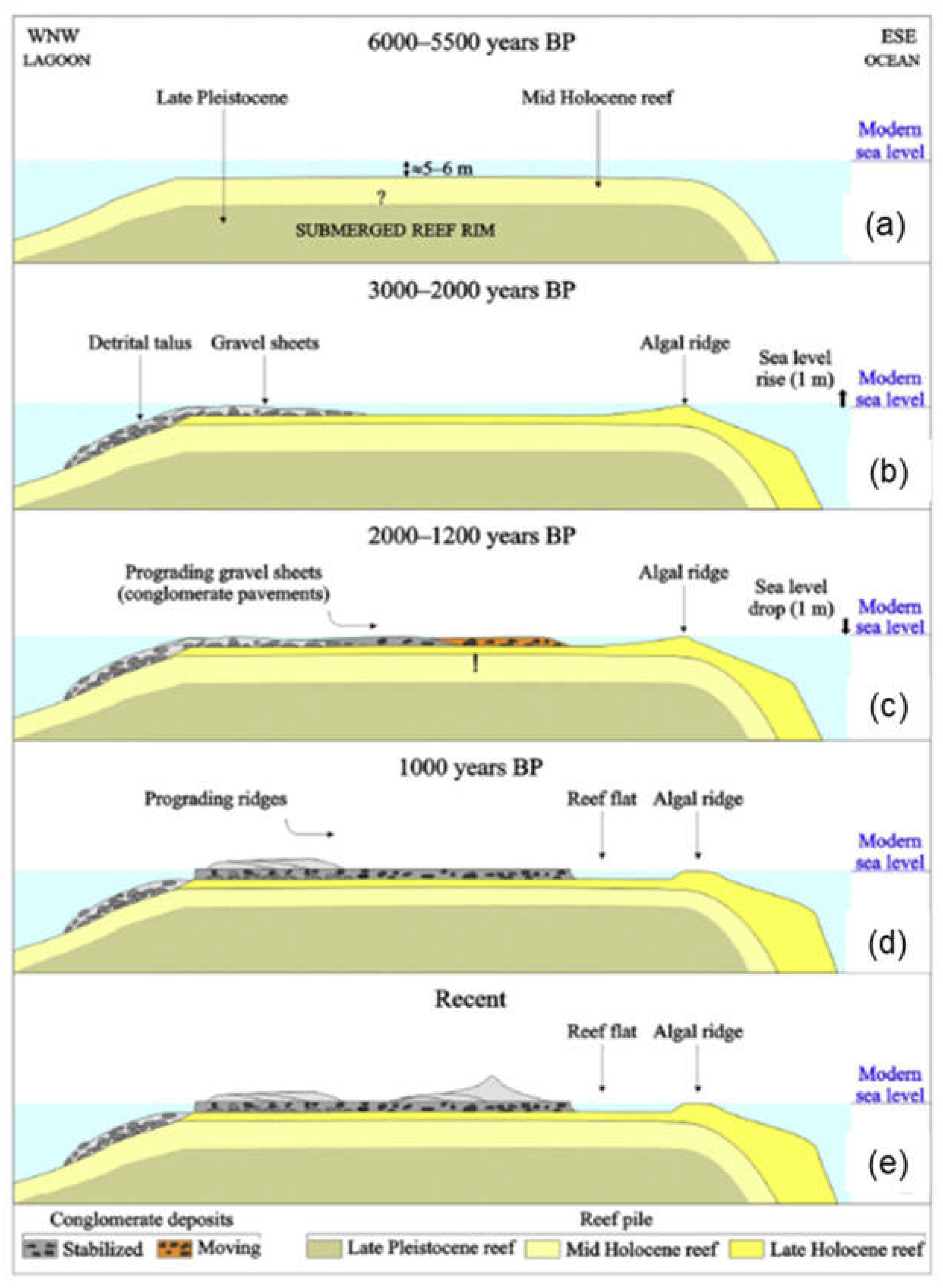
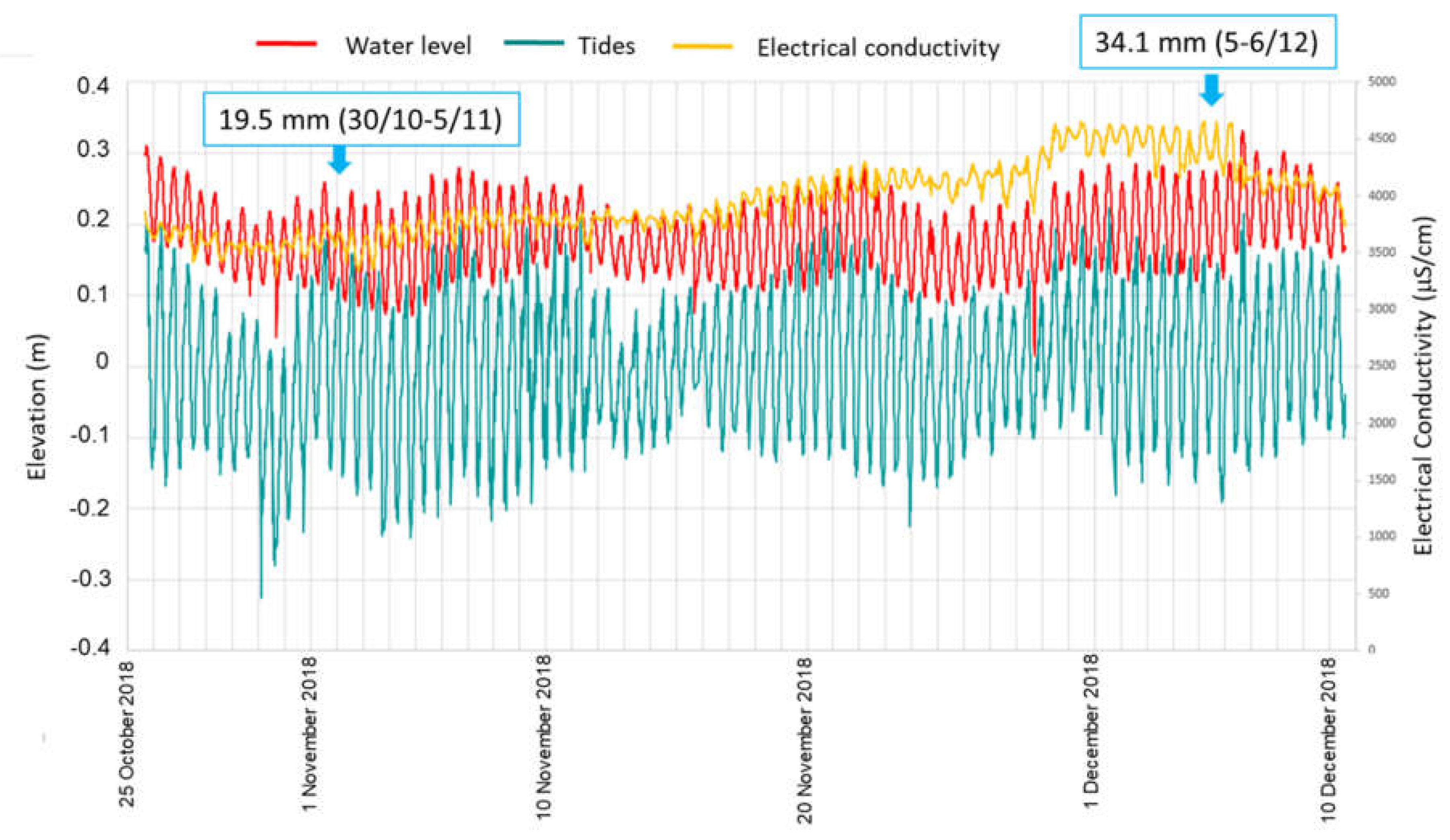
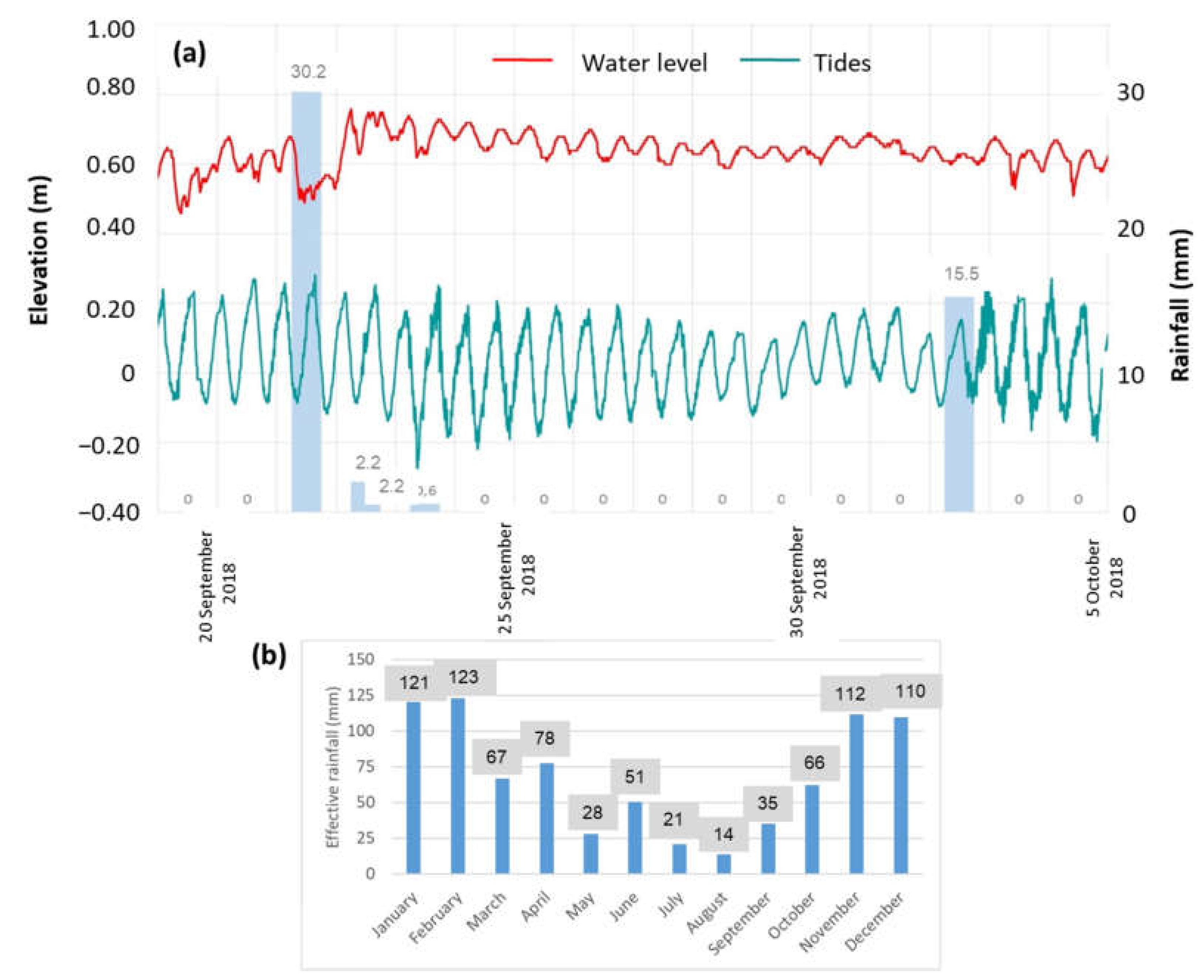
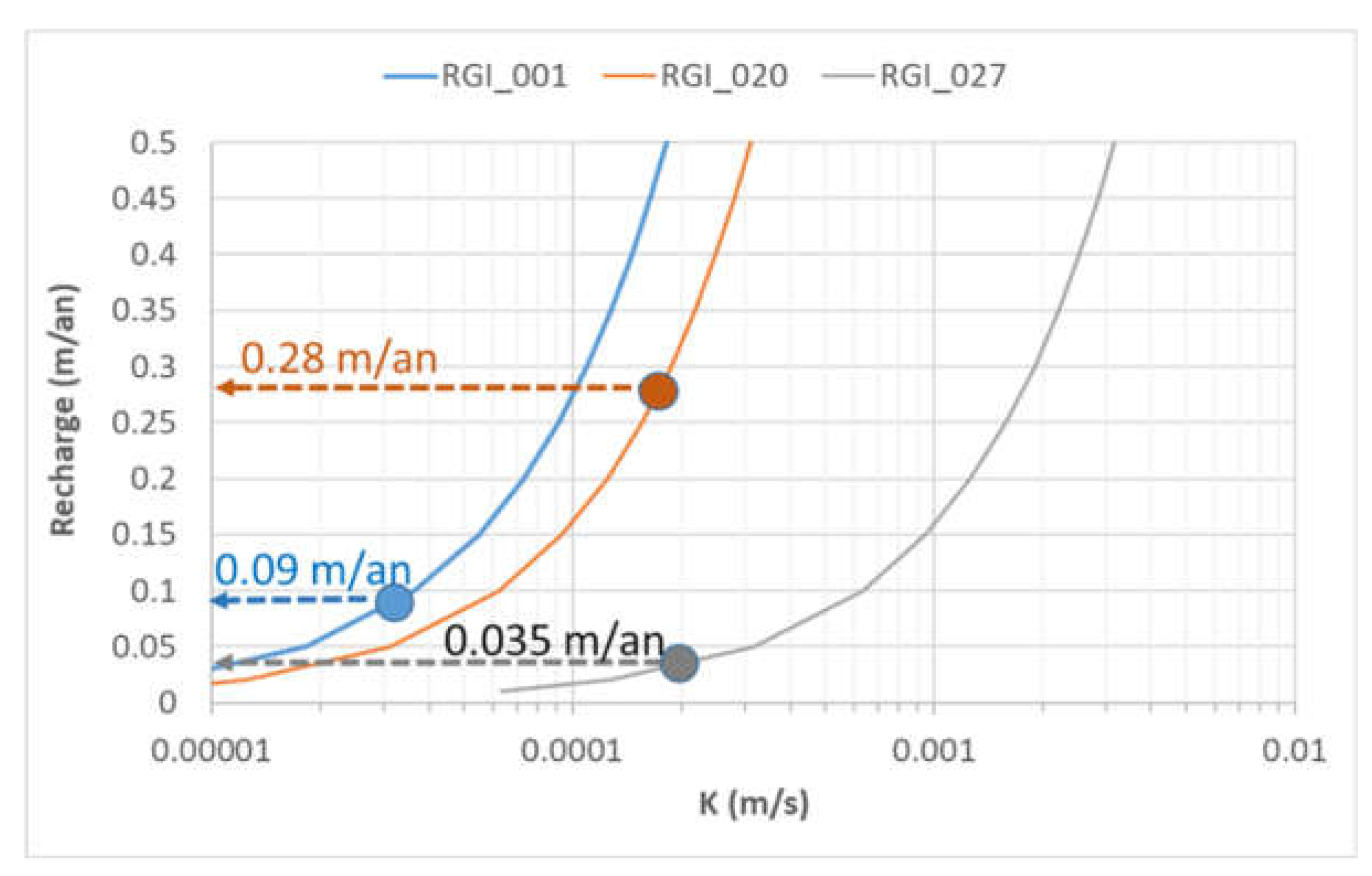
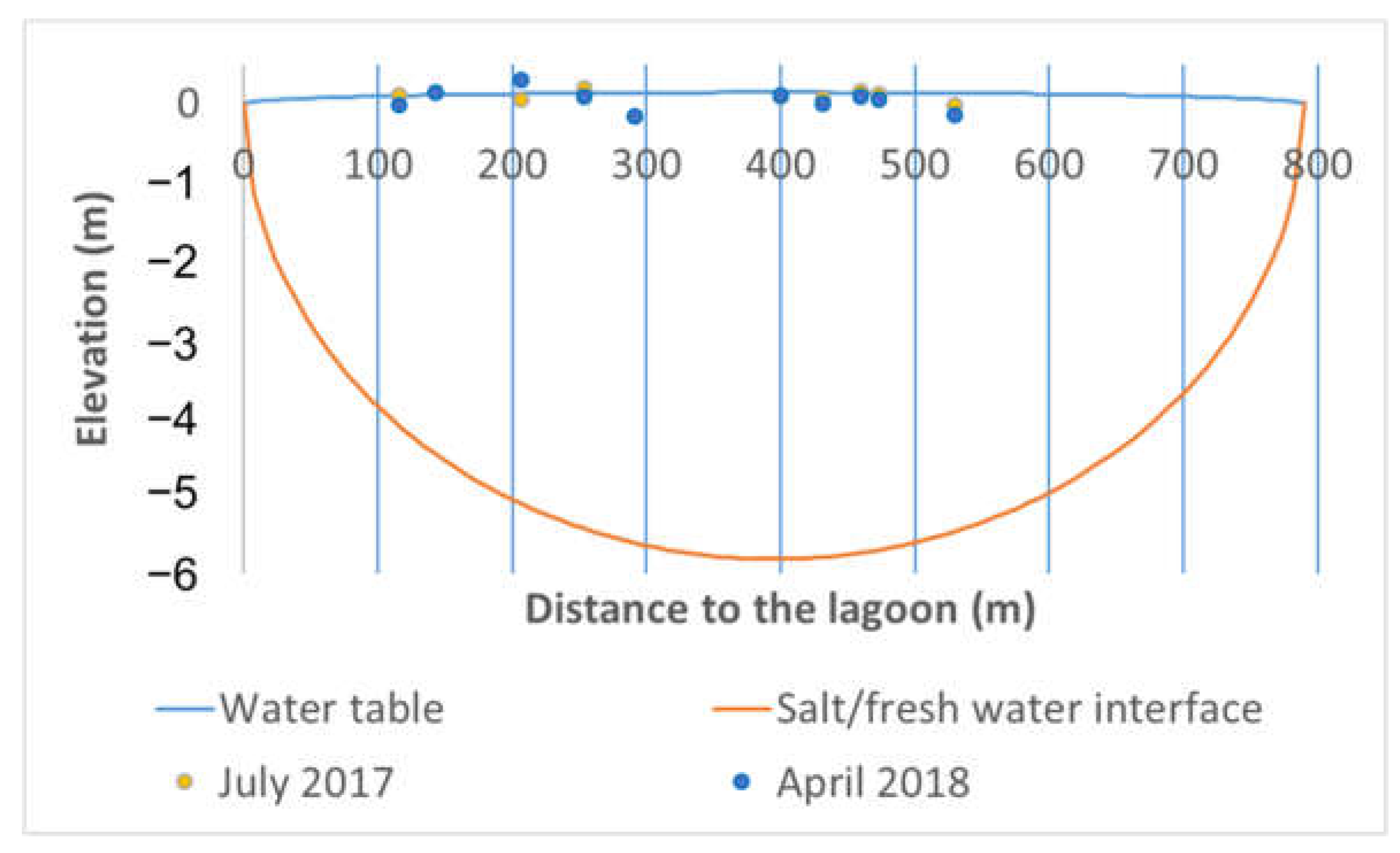
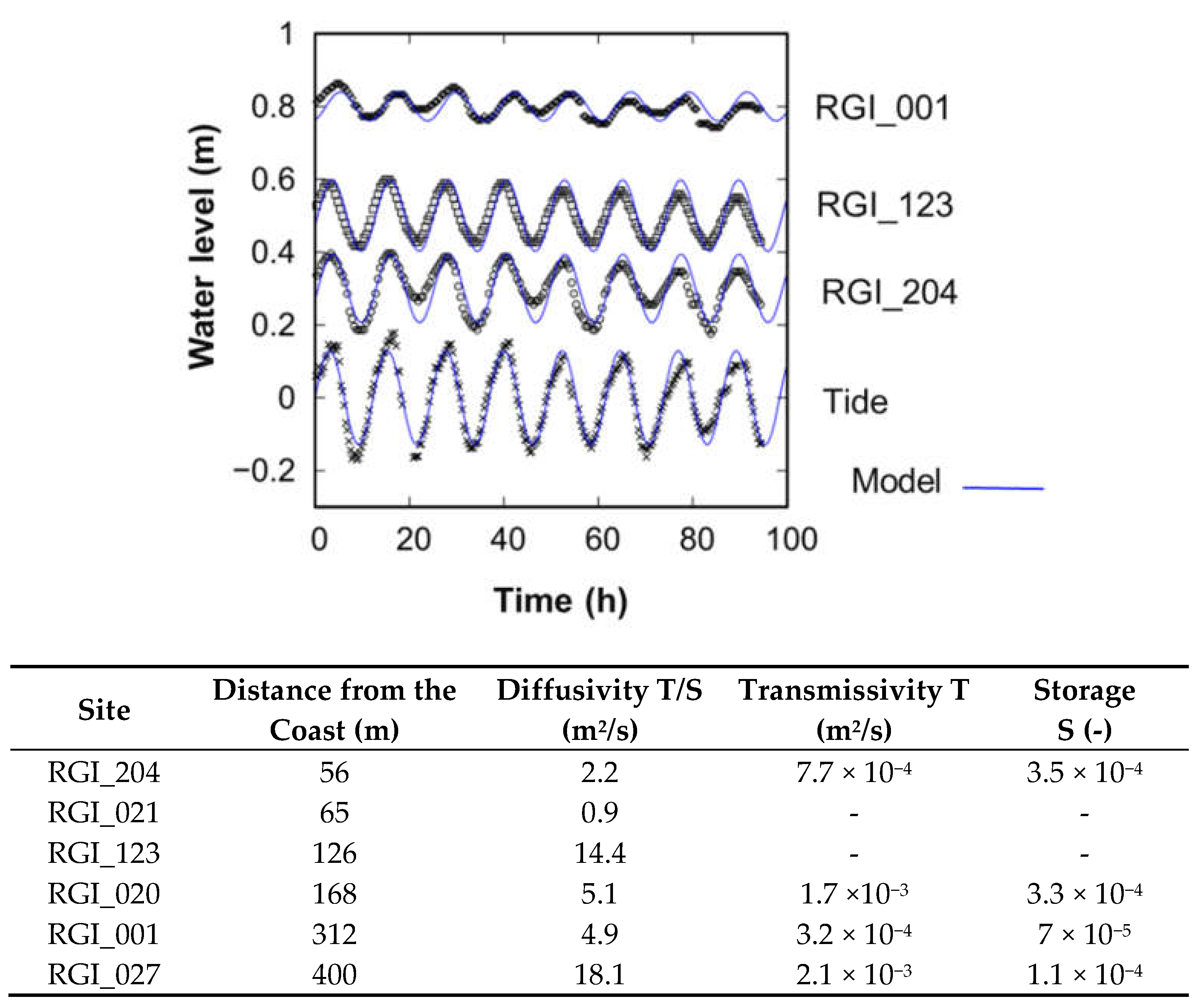
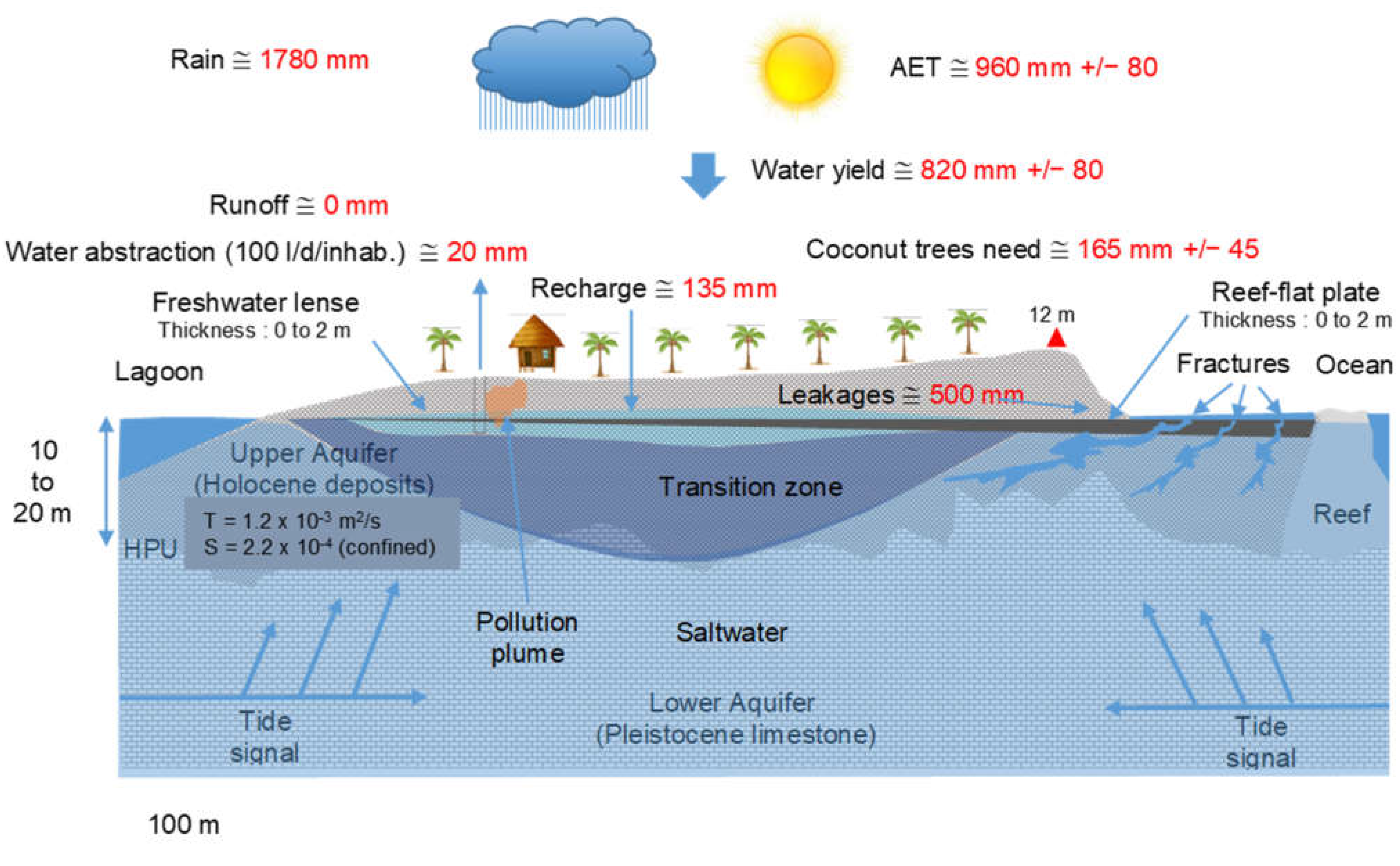
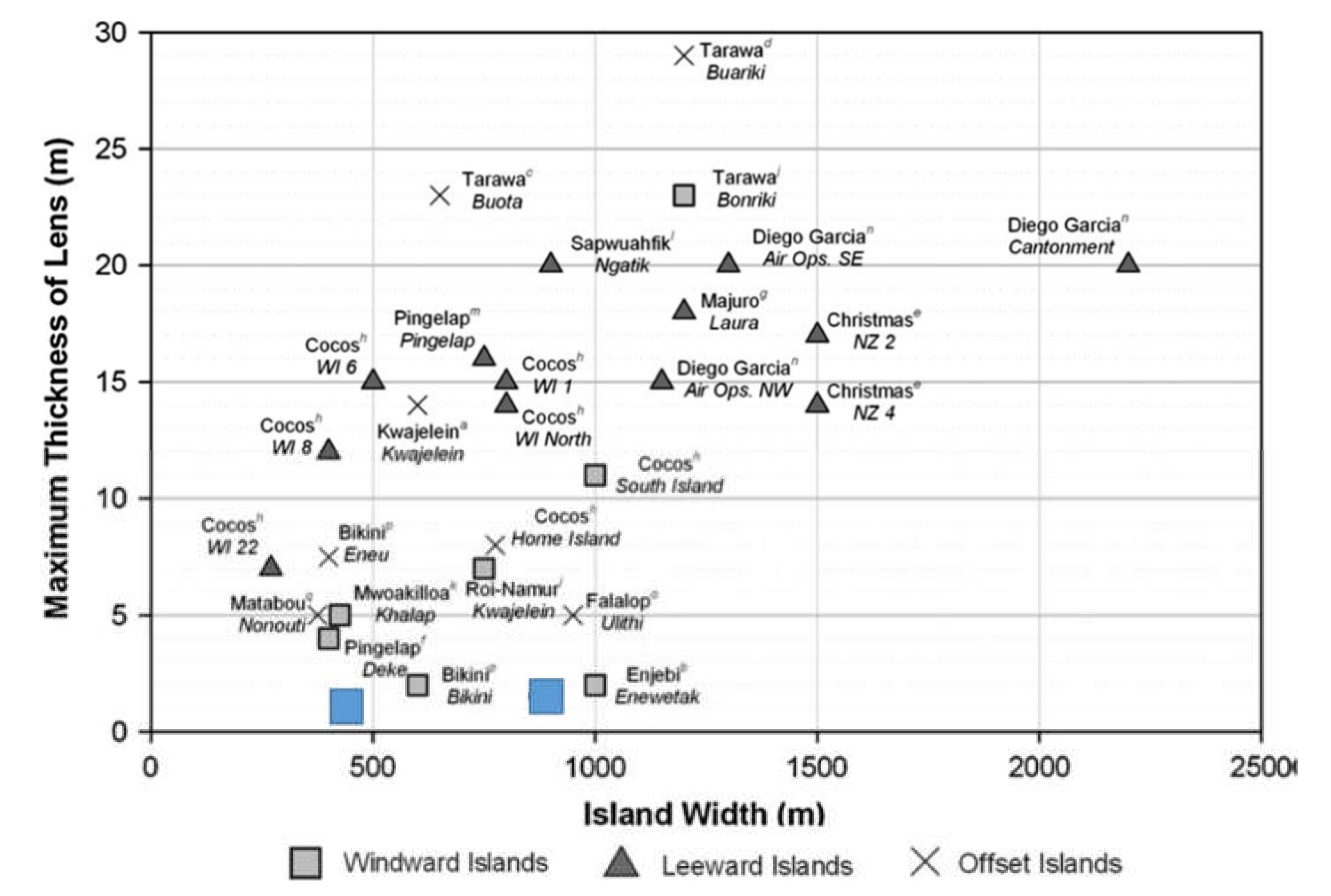
| Pumping Well | Well Radius (m) | Duration (min) | Pumping Rate (m3/h) | Transmissivity (m2/s) |
|---|---|---|---|---|
| RGI_001 | 0.90 | 60 | 1.4 | 3.2 × 10−4 |
| RGI_020 | 0.65 | 39 | 6/13/16/21 | 1.7 × 10−3 |
| RGI_027 | 0.70 | 120 | 0.4 | 2.1 × 10−3 |
| RGI_128 | 0.60 | 3/6/10 | 35/14/18 | 1.7 × 10−3 |
| RGI_204 | 0.65 | 45 | 1.2 | 7.7 × 10−4 |
| Parameter | Symbol (Unit) | RGI_001 | RGI_020 | RGI_027 |
|---|---|---|---|---|
| Length of the section | L (m) | 840 | 360 | 860 |
| Distance to nearest sea coast | x (m) | 310 | 165 | 400 |
| Average water level * | h (m.a.s.l) | 0.59 | 0.2 | 0.15 |
| Transmissivity ** | T (m2/s) | 3.2 × 10−4 | 1.7 × 10−3 | 2.1 × 10−3 |
| Hydraulic conductivity | K (m/s) | 3.2 × 10−5 | 1.7 × 10−4 | 2.1 × 10−4 |
Publisher’s Note: MDPI stays neutral with regard to jurisdictional claims in published maps and institutional affiliations. |
© 2022 by the authors. Licensee MDPI, Basel, Switzerland. This article is an open access article distributed under the terms and conditions of the Creative Commons Attribution (CC BY) license (https://creativecommons.org/licenses/by/4.0/).
Share and Cite
Maréchal, J.-C.; Hakoun, V.; Corbier, P. Role of Reef-Flat Plate on the Hydrogeology of an Atoll Island: Example of Rangiroa. Water 2022, 14, 2695. https://doi.org/10.3390/w14172695
Maréchal J-C, Hakoun V, Corbier P. Role of Reef-Flat Plate on the Hydrogeology of an Atoll Island: Example of Rangiroa. Water. 2022; 14(17):2695. https://doi.org/10.3390/w14172695
Chicago/Turabian StyleMaréchal, Jean-Christophe, Vivien Hakoun, and Pauline Corbier. 2022. "Role of Reef-Flat Plate on the Hydrogeology of an Atoll Island: Example of Rangiroa" Water 14, no. 17: 2695. https://doi.org/10.3390/w14172695
APA StyleMaréchal, J.-C., Hakoun, V., & Corbier, P. (2022). Role of Reef-Flat Plate on the Hydrogeology of an Atoll Island: Example of Rangiroa. Water, 14(17), 2695. https://doi.org/10.3390/w14172695







